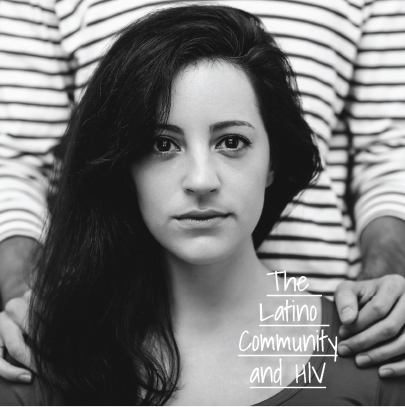HOME
PAST DIGITAL ISSUES
HIV/AIDS HOTLINES
HIV 101
POSITIVE PROFILES
ASO SPOTLIGHT
ARCHIVED ARTICLES
HOW TO PAY FOR HIV TREATMENT AND MEDICATIONS
ADAP CRITERIA AND FORMULARIES
ASO LISTINGS
REVIEW OF HIV MEDICATIONS
2018 HIV/AIDS FUNDRAISING ACTIVITIES & EVENTS
ABOUT HIV POSITIVE! MAGAZINE
LINKS
SUBSCRIBE
CONTACT US
ADVERTISER INFORMATION

Latinos represented approximately 16% of the U.S. population but accounted for 21% of new HIV infections and 19% of people living with HIV in 2010. There are more than 1.1 million people living with HIV in the U.S. and more than 220,000 are Latinos.
So Latinos in the United States are hit hard by HIV, having higher rates of both new HIV infections and people living with HIV disease than their white counterparts. Latino youth and gay and bisexual men have been mostly affected. A number of challenges contribute to the epidemic in Latino communities, including poverty, injection drug use, stigma and discrimination, limited access to health care, and language or cultural barriers in health care. As the largest and fastest growing ethnic minority group in the United States, addressing HIV in the Latino community is important.
Common Means Of Infection
Of course, there isn't just one "Latino Community" in the United States. The term "Latino" refers to a person whose family is from a Spanish-speaking country, regardless of race. So the Latino population of the United States is very diverse - and so are the predominant means of infection.
CDC data suggests that Latinos born in Puerto Rico are more likely than other Latinos to be infected by HIV as a result of injection drug use or high-risk heterosexual contact (which is defined as "sex with a person known to have or be at risk for HIV infection"). By contrast, sex with other men is the primary cause of HIV infections among Latino men born in Central or South America, Cuba, Mexico or the United States.
Overall, for Latino males, the most common methods of transmission cited by the CDC were:
- Sex with other men
- Injection drug use
- High-risk heterosexual contact
For Latina females, the most common methods of transmission were high-risk heterosexual contact and injection drug use.
Reasons For Higher Infection Rate
There is no single "smoking gun" that explains why the rate of infection is so high in the Latino population. Instead, experts believe a constellation of factors is responsible.
Denial
When AIDS was first identified, it was thought of as a disease that affected white male homosexuals. As a result, many Latinos did not think they were at risk. Unfortunately, this denial continues, compounded by the cultural expectation that all Latino men are "macho." Many Latinos still cannot bring themselves to admit that gay Latinos exist.
Lack of Condom Use
HIV advocates promoting condom use in the Latino communities have an uphill battle on their hands. Part of the resistance to condoms is due to the teachings of the Catholic church, which prohibited condom use. Part of it is a feeling among Latinos that condoms take away from the intimacy of sex. In five studies of gay and bi-sexual men cited by the CDC, gay Latino men had the lowest incidence of condom use of all demographic groups.
Language Barrier
Of course, there are HIV educational materials printed in Spanish - but not nearly as many as printed in English. In general, the knowledge of basic facts about HIV is very low among Latinos, largely because the information is not widely available in Spanish. In addition, the language barrier makes it hard for Latinos to access basic health care resources.
Socio-Economic Factors
Poverty, transience, lack of formal education, lack of health insurance and lack of access to health care are all factors that put Latinos at high risk for HIV and then treatment.
Fear of Deportation
For Latinos in the United States without documentation, fear of being identified as an illegal and then deported keep them from interacting with any branch of government - including the health care system. For undocumented workers with HIV, deportation can be a death sentence if they are returned to a country where adequate HIV treatment is not available.
All these factors add up, and they take their toll. the net result is that, in Texas - a state with a high Latino population - 34% of Latinos diagnosed with HIV were diagnosed with AIDS within one month. Since untreated HIV can take 10-years to progress to AIDS, that means that they have been unknowingly spreading the virus for a decade. In addition, since HIV is much easier to treat earlier than once it has progressed to AIDS, their health outcomes are much worse.
What You Can Do
If you are a member of the Latino community it's up to you to be responsible if you are HIV-positive both to yourself and your partner(s). If you know someone who might be at risk because of their lifestyle, urge them to get tested - that can stop new infections.
It's up to all Latinos to educate themselves, protect themselves, get tested, and seek out the highest-quality health care if they are HIV-positive.
If you need some places to start. Here are some resources that might be of some help:
-- Many AIDS Service Organizations (ASOs) have Spanish speaking volunteers and may have resources more tailored to the Latino community. Check with your local ASO.
- The Latino Commission on AIDS; Go online at www.latinoaids.org
- Latinos Salud; Go online at www.latinossalud.org
- Carolina RAIN; Go online at www.carolinarain.org/programs-services/latinosupport
Copyright 2018, Positive Health Publications, Inc.
This magazine is intended to enhance your relationship with your doctor - not replace it! Medical treatments and products should always be discussed with a licensed physician who has experience treating HIV and AIDS!